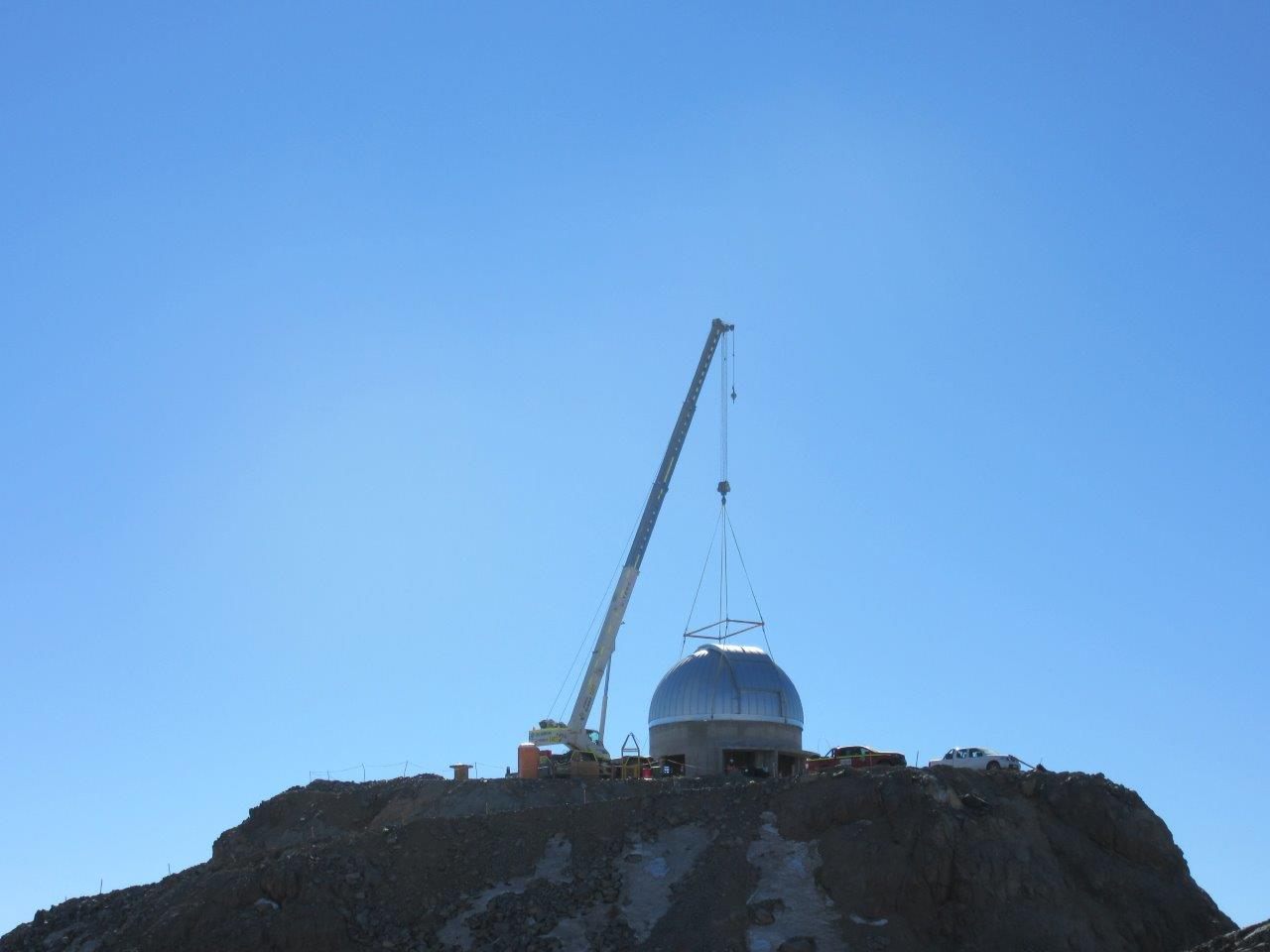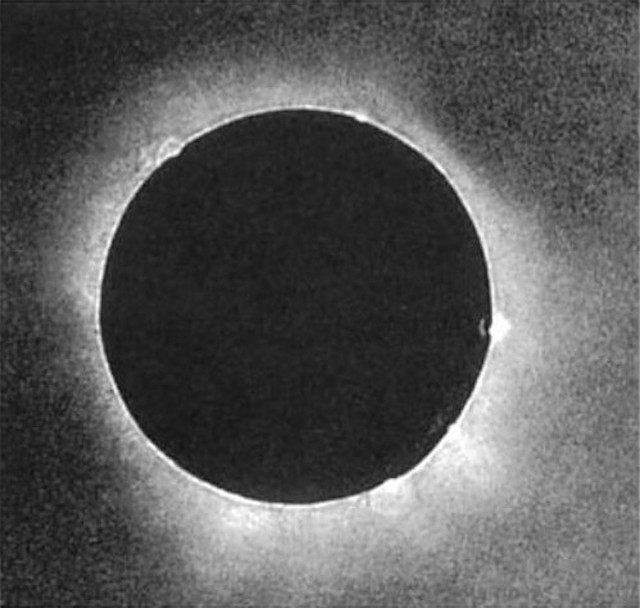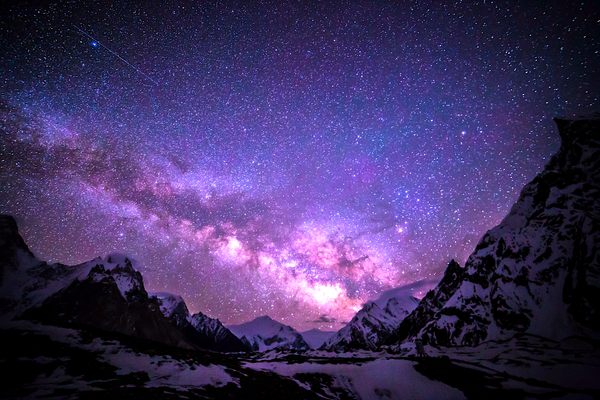The Camera That Will Transform Our Understanding of the Universe
Brookhaven National Laboratory’s Paul O’Connor explains the mind-boggling promise of the Large Synoptic Survey Telescope.

There’s a mystery at the heart of physics. Two decades ago, in 1998, cosmologists discovered that the universe is not just expanding—a discovery of the early 20th century—but that the rate at which it’s expanding is getting faster.
That’s not what they expected to find, but it made a kind of sense. If the expansion of the universe is accelerating, there needs to be a cause; not knowing exactly what that was, physicists called it “dark energy.” In theory, dark energy interacts through gravity, is spread out homogeneously through the universe, and is not particularly dense. If you total up all of the forces that make up the universe, it would account for 68.3 percent of matter and energy.

Account for dark energy, and certain theories of physics start to click. It helps explain the rate that galaxies rotate and reveals a more sensible age of the universe—without dark energy, scientists were finding that some stars were supposedly older than the universe as a whole. But almost 20 years after this discovery, physicists still know only a little bit about it. In order to learn more, scientists from dozens of institutions in 23 countries have been working together to create the Large Synoptic Survey Telescope, a giant, digital camera that has the power to capture the light of several billion faint galaxies, millions of light years away.
“All the existing telescopes with cameras were built before the discovery of dark energy,” said Paul O’Connor, a senior scientist at Brookhaven National Laboratory. “We expect the LSST to map the entire sky and find out where all that dark matter has been hiding.” O’Connor has been working on the project’s camera sensors for more than ten years, and at Atlas Obscura’s Total Eclipse festival on Sunday, he explained how the telescope, when it goes into operation on a mountain in Chile, could transform our fundamental understanding of the universe.

For millennia, scientists and scholars have been looking at the night sky and recording their impressions with the best technology available. Starting in the 19th century,* with the advent of photography, astronomers started taking pictures of the stars and other celestial phenomena; in 1851, a daguerreotypist, Johann Julius Berkowski, took the first photo of a solar eclipse. In the 1920s, Edwin Hubble used what was then the world’s largest telescope to established that spiral nebulae were whole other galaxies, millions of light years distant from our own. The human understanding of space changed; we saw for the first time the extent of empty space, “punctuated by these disc-shaped assemblies of stars, hundreds of billions of stars, which are the galaxies,” as O’Connor puts it.
In the 1970s, scientists at Bell Labs created a technology that used a “charge-coupled device” to capture lights as digital images. In 1981, the astrophotographer Jim Gunn used a CCD camera to create a 500 by 500 pixel image of a faint star cluster. He called that camera a “nearly perfect device.” This same technology, refined, is what kicked off the revolution in consumer-grade cameras and has given us the astounding images of the universe captured by the Hubble Telescope and other instruments. Today, there are dozens of huge telescopes, with top-notch CCD cameras. The question for the team building the LSST, O’Connor says, is: “Why are we going to the trouble of building another one?” What will the LSST do that existing cameras will not?

If you looked up at the sky on a dark night, you might see 2,500 stars with your human eyes. The LSST would see a billion stars, O’Connor said this weekend, and those stars would be outnumbered by distant galaxies, three to one. The camera’s field of view is ten square degrees—about the size of a dime, held up to the sky. “Every photograph we take of that size of the sky gets us another million galaxies,” O’Connor said.
One of the jobs of the LSST is to survey as many of these galaxies, over as wide a region of sky, as possible.
When the LSST goes into operation, which is scheduled for 2020, it will spend a decade scanning the sky, again and again. Over about 3,000 nights, the instrument will scan and capture each patch of sky one thousand times. “We’re really going to be making a movie of the universe,” O’Connor said. The LSST was specially designed to make this possible—it has a relatively wide field of view, it can scan each tiny section of the sky quickly, and it can look deep into the depths of the universe, to capture the faintest, most faraway galaxies.

With the information collected, cosmologists hope to start to better understand dark energy, the force that is causing those distant galaxies to speed away from us at an ever-increasing pace. This line of inquiry has the potential to transform the field of physics. “The acceleration of the universe is, along with dark matter, the observed phenomenon that most directly demonstrates that our theories of fundamental particles and gravity are either incomplete or incorrect,” the Dark Energy Task Force wrote in 2006. By looking at these faraway galaxies and understanding more about how they move, scientists may unlock fundamental truths about the nature of time, space, matter, and the forces that hold our world together, that have so far escaped our understanding.
That’s the reason they’re building the LSST. One of the reasons, at least.
*Correction: An earlier version of this story gave the wrong century for the advent of photography. The first photograph was taken in the early 19th century, not the 18th century.











Follow us on Twitter to get the latest on the world's hidden wonders.
Like us on Facebook to get the latest on the world's hidden wonders.
Follow us on Twitter Like us on Facebook